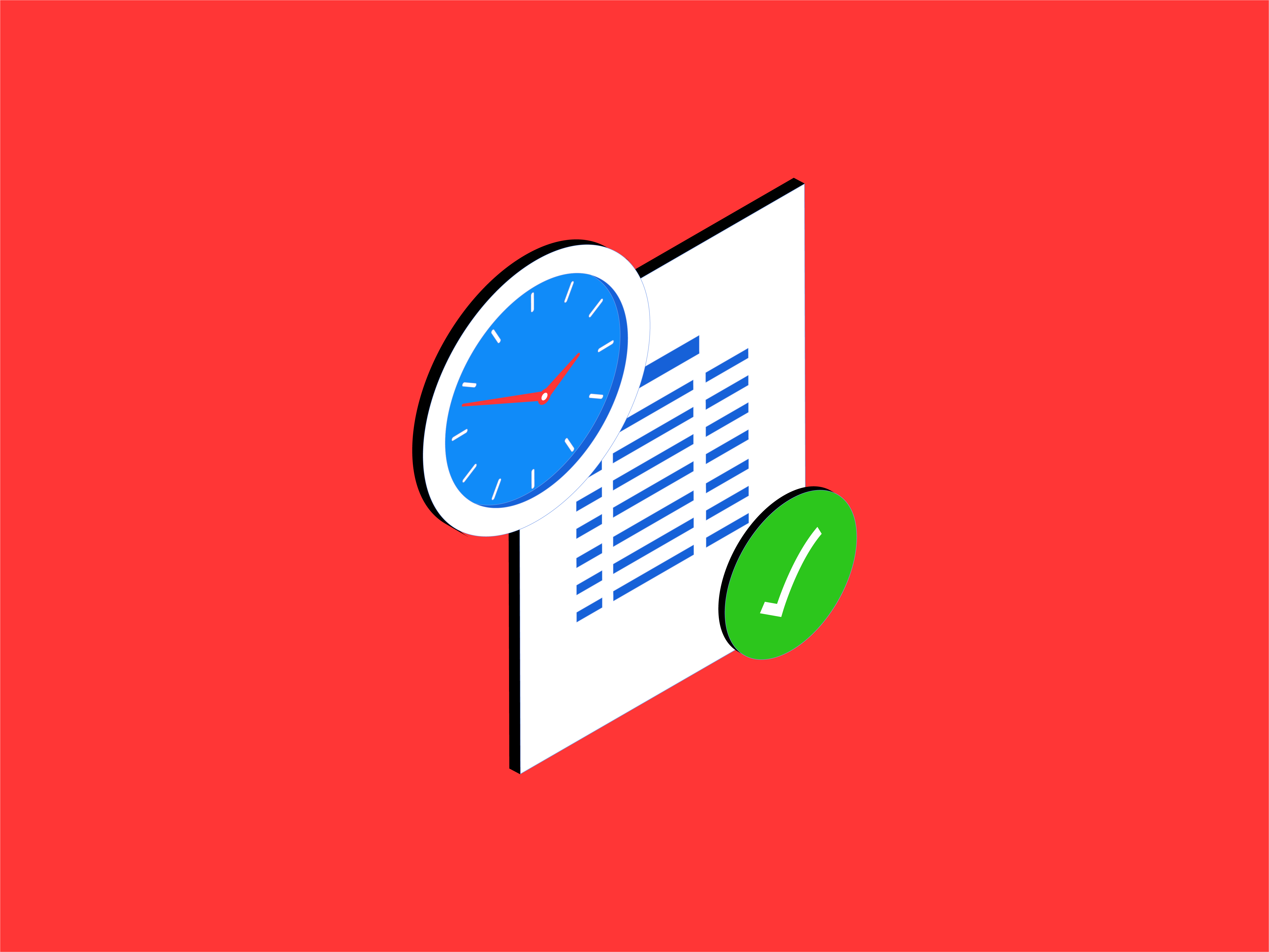Cash flow is vital for keeping operations running smoothly. However, it can be challenging to maintain a healthy cash flow, especially when dealing with unpaid customer invoices. Accounts receivable (AR) aging reports are a valuable tool in navigating the complexities of outstanding payments.
Imagine a scenario where unpaid invoices disrupt your financial rhythm and hinder your ability to meet expenses. AR aging reports emerge as a beacon in this situation, providing a clear picture of the aging status of your customer balances. By categorizing invoices based on their due date, these reports unveil the extent of overdue payments, allowing you to prioritize collection efforts and safeguard your cash flow.
This blog post discusses AR aging reports at length. Begin exploring their significance.
What are accounts receivable aging reports?
An accounts receivable (AR) aging report is a financial report that categorizes a company's outstanding customer invoices based on how long they have been unpaid. This report helps assess the company's credit risk and collection efforts.
Example of accounts receivable aging report
The table below displays the aging of accounts receivable for ACME Corporation as of October 4, 2023. Please review the information presented—
Aging Category: This column shows the number of days past due for each invoice.
Customer Name: This column shows the name of the customer who owes the invoice.
Invoice Number: This column shows the unique identifier for each invoice.
Original Amount: This column shows the original amount of the invoice when it was issued.
Current Balance: This column shows the amount of the invoice that is still outstanding.
Due Date: This column shows the date when the invoice was originally due.
Further, the table is sorted by aging category, with the most recent invoices at the top. The totals at the bottom of the table show the total original amount and current balance for each aging category.
.jpeg)
.jpeg)
Benefits of AR aging report
Proactive Cash Flow Clarity
Monitor real-time invoice aging to identify potential delinquencies and take prompt collection action. This reduces bad debt risk and improves cash flow predictability for proactive financial decisions.
Optimized Collection Strategies
The report shows payment patterns, identifying chronic late payers and accounts close to delinquency. This helps create focused collection strategies, prioritizing high-impact cases and streamlining collection efforts. This results in higher collection rates and less bad debt.
Precise Financial Forecasting
AR aging reports provide insights into outstanding receivables, enabling accurate cash flow forecasting. This helps finance leaders plan for future expenses and investments, ensuring sufficient liquidity and avoiding financial strain.
6 Key steps in creating an AR aging report
Step 1: Gather data
Collect all relevant data for outstanding invoices, including:
- Customer name
- Invoice date
- Invoice number
- Original dollar amount
- Current outstanding balance
- Due date
This data can typically be obtained from your accounting software or customer relationship management (CRM) system.
Step 2: Determine aging categories
Establish aging categories based on the number of days past due. Common categories include:
- Current (0-30 days past due)
- 1-30 days past due
- 31-60 days past due
- 61-90 days past due
- 91+ days past due
You can customize these categories based on your company's specific needs and credit risk tolerance.
Step 3: Sort data by customer and aging category
Arrange the data in a spreadsheet or table format, sorting customers by name and invoices by aging category. This will provide a clear overview of each customer's outstanding balance and payment history.
Step 4: Calculate totals
Calculate the total outstanding balance for each customer and each aging category. This will help you understand the overall distribution of your accounts receivable across different aging periods.
Step 5: Format the report
Apply appropriate formatting to the report, such as adding headers, borders, and color coding to highlight key information. This will enhance the readability and visual appeal of the report.
Step 6: Review and analyze the report
Carefully review the report to identify any trends or patterns in customer payment behavior. Analyze the aging of accounts receivable to assess the effectiveness of your collection efforts and credit risk management strategies.
7 Best ways to use AR aging report
Below are some practical ways you can utilize an AR aging report:
#1 Identify and prioritize overdue invoices
The report highlights overdue invoices, helping you identify which ones require immediate attention. Focus on collecting payments for invoices in the older aging categories (61-90 days, 91+ days past due) to minimize the risk of bad debt.
#2 Assess credit risk
Tracking customer balances over time allows you to assess their creditworthiness. Increasing overdue invoices for a customer may signal a credit risk, requiring further investigation. Improve collection efficiency by identifying areas for enhancement and implementing strategies.
#3 Evaluate collection policies
Analyze the aging report to assess collection effectiveness. If many invoices are in older aging categories, improve collection efforts. Identify areas for improvement and implement strategies like automated reminder emails, better communication with customers, or flexible payment options.
#4 Make accurate financial projections
Use the AR aging report to improve financial projections, especially for cash flow. By knowing when outstanding invoices are expected to be collected, you can forecast cash inflows and make informed financial decisions. This will aid in planning for future expenses, managing investments, and making strategic decisions for business growth.
#5 Monitor payment trends
Regularly review the AR aging report to monitor payment trends and identify changes in customer behavior. This proactive approach helps address potential issues before they become bad debt. For example, if you notice a decline in on-time payments from a specific customer, reach out to understand the reason and offer assistance if needed.
#6 Collaborate with sales and finance teams
Share the AR aging report with sales and finance teams to improve financial management. Sales can use the report to identify collection issues with customers and provide feedback, while finance can utilize it for cash flow forecasting and budgeting. This collaboration can enhance financial performance.
#7 Establish clear collection goals
Set specific collection goals based on AR aging report insights. This helps track progress, measure effectiveness, and make adjustments. For example, aim to reduce 91+ days past due invoices by 10% in the next quarter.
Create AR aging reports painlessly with Bluecopa
See aging reports created within Bluecopa—

Bluecopa automates aging reports in the following ways—
Automated data collection
Bluecopa automatically collects data from your invoicing and payment systems, eliminating the need for manual data entry. This ensures that your accounts receivable aging reports are always up-to-date and accurate.
Real-time aging categorization
Bluecopa automatically categorizes invoices based on their aging status. This feature makes it easy to identify overdue invoices and prioritize collection efforts.
Customizable report templates
Bluecopa offers customizable report templates that enable you to personalize your AR aging reports according to your specific requirements and preferences. You have the flexibility to add or remove columns, filter data, and format the report to suit your preferences.
Scheduled report generation
Bluecopa can automatically generate AR aging reports on a regular schedule, such as daily, weekly, or monthly. This ensures that you always have the most up-to-date insights into your accounts receivable balances.
If you're looking to automate AR aging reports, you're just one step away. Request a demo to learn more.
You might also like
Here are some other posts from us you may enjoy reading!
Account Receivable Observability: Gaining Clarity in Financial Management




.jpeg)

